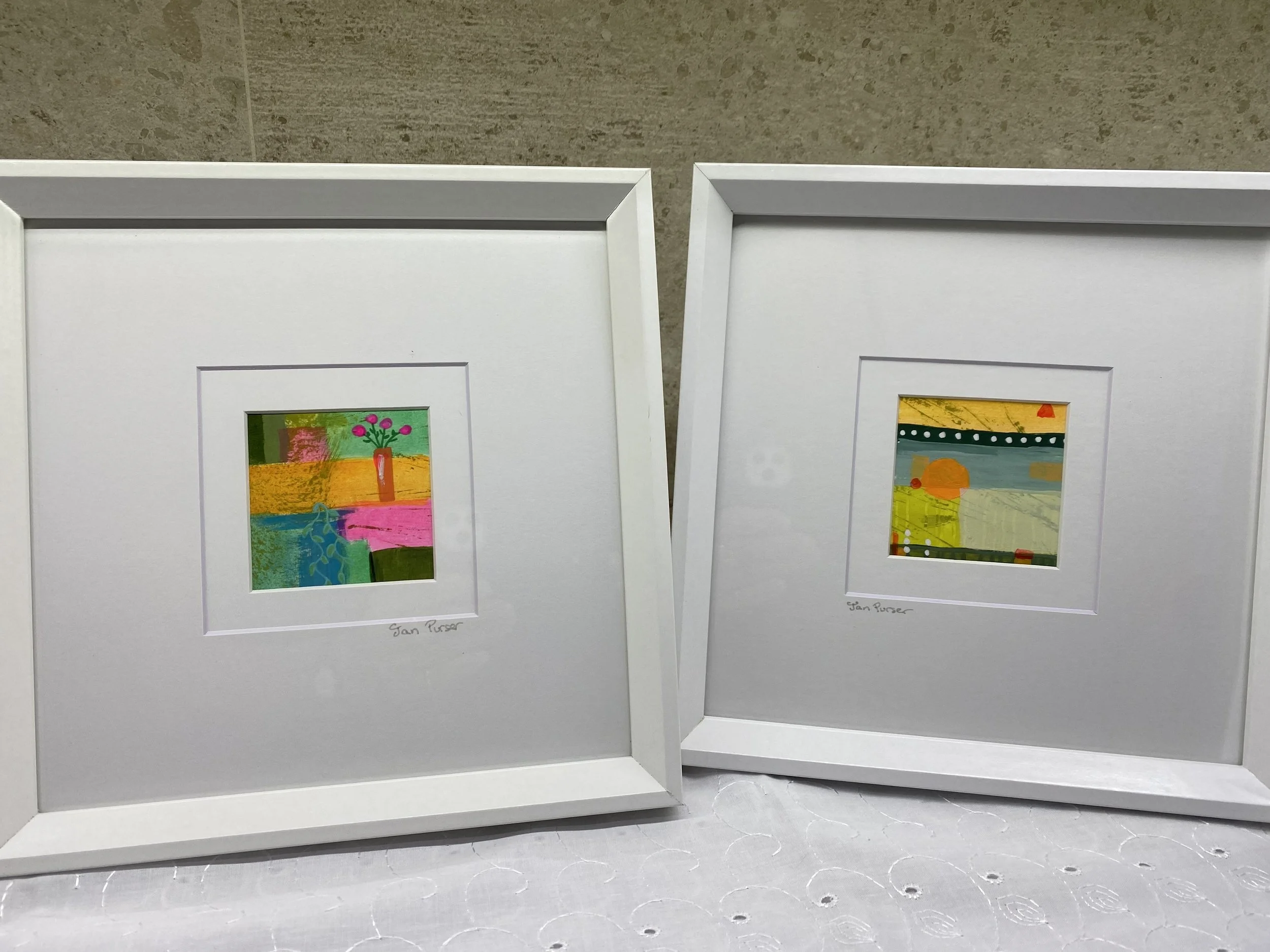My painting group participated in a really interesting workshop last month with Bridget Seaton, a local artist. It was all about making greys or neutrals. That probably sounds a bit dry to the average person, but it was truly fascinating to all of us and, as you can see from the colour charts I made in the workshop, grey is not just grey.
In the first image below, each column of grey mixes are created from a blue, a red, a yellow and adding white in increasing amounts. There are cool and warm blues, reds and yellows and this influences the resulting grey temperature.



